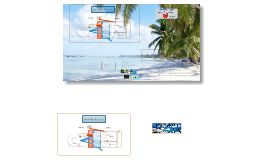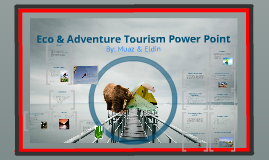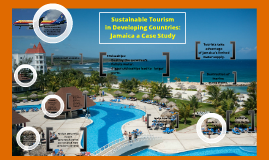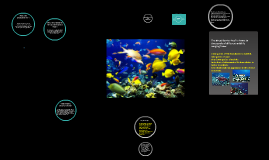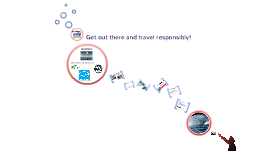Ecotourism
Transcript: Ecotourism in Dominican Republic Value Chain: Ecotourism Hotel Integration of Locals – Tariff- keep profits in the country – Training programs and jobs Why Dominican Republic Airlines Value Chain: Ecotourism Strategies: 1. Discourage profits leaving the country Tariffs on international hotels 2. Direct: Joint ownership between Community and private sector Legal contracts sharing profits between 3. Encourage local jobs in tourism industry Training in guiding, languages, and business skills to promote advancemen 4. Indirect: Encourage hotels and and restaurants to source locally and provide access to tourist market Support viability of local businesses (co-ops, microfinancing) Build linkages 5. Better Marketing: internet 6. Method of Evaluation Certificate of sustainable tourism model Restaurants Supply Travel Agencies Airlines Goal 1: Profits should stay in the country Goal 2: Increase local involvement Goal 3: Long run, increase demand of tourists Handicrafts/Souvenirs Tours Transportation Food/Local Services Supply by Kevin Yu, Skyler Brochet, Kayla Caldwell, Hailey Kennedy Government high volume, low cost tourism all inclusive resorts Lessons Learned What Works What Doesn't Direct Handicrafts/Souvenirs Demand Restaurants Indirect Goals analyzed from value chain in order of importance Travel Agencies Out of the Country Direct Sustainability • Creation, Upkeep, Protection • National Sustainability Certification Program – Country’s image – Aids tourists – Incentive DEVELOPED WORLD TOURISTS Food/Local Services Budget Spectrum Fluctuations Advertisements DEVELOPED WORLD TOURISTS Ex. Miches, Grupo Puntacana high-end, low impact tourism local linkages - through business and community initiatives Tours Power • Joint Community & Private Ownership – e.g., Posadas Amazonas • Legal contract • Long-term plan • Incentives for both Out of the Country Poor Locals Poor Locals 16 national parks, 67 protected areas large tourism industry - 5 million tourists in 2012 government interested in tourism development - invested $100 million in tourism zones 1/3 population living in poverty, 20% in extreme poverty largest tourism industry in Caribbean, highest rates of unemployment and poverty • Local Sourcing – Microfinance to make viable – Linkages between local businesses and hotels Demand Promotion • Internet Utilization – Free & independent travelers = around 50% – Distance, time, language obstacless Government Transportation Hotel What is Ecotourism? Different from Tourism? Why Ecotourism? What exactly are we selling? Indirect






